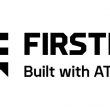A leap of faith
Extending the speed and range of Wi-Fi to enable Ethernet-like wireless data services that span several office floors and eliminate the Ethernet jack in cubicles and conference rooms is nirvana for existing wireless local area network, or WLAN, users.
That’s the notion behind development of the next generation of 802.11 technology, known as 802.11n, which is designed to boost Wi-Fi’s data rate from its official 56 Mb/s in the 802.11g standard to real throughput of 100 Mb/s or more.
Although ratification of the final 802.11n standard isn’t expected for at least another year, the development process has crept along since its inception in 2003. In March, the Institute of Electrical and Electronics Engineers (IEEE) finally moved toward ratifying the standard through Draft 2.0. Changes from Draft 1.0 to Draft 1.10 were minimal, and Draft 1.10 was approved to become Draft 2.0. In turn, ratification of Draft 2.0 is expected by early 2009 — again, hopefully with only minor changes.
But vendors haven’t been waiting.
The fact that the standard didn’t change dramatically through the first two drafts has increased the comfort level among vendors hoping to offer 802.11n products that incorporate multiple-input/multiple-output, or MIMO, smart antenna technology to increase data speeds, wireless range and reliability. The seal of approval came in May when the Wi-Fi Alliance said it would certify Draft 2.0 products to ensure industry-wide interoperability, security and backward compatibility with previous generations of Wi-Fi equipment.
While consumer Wi-Fi vendors had been pushing pre-802.11n equipment into that market well before the advent of the Wi-Fi Alliance’s certification program, enterprise Wi-Fi vendors had abstained, realizing their customers would never accept equipment before final standardization. Eight months later, every major enterprise Wi-Fi vendor has entered the 802.11n Draft 2.0 market.
“What changed is primarily the competitive marketplace, and Cisco [Systems] has legitimized it,” said Stan Schatt, vice president and research director for ABI Research.
Meru Networks was the first vendor to introduce a commercial 802.11n access point based on the Draft 2.0 standard, which it did in May. Trapeze Networks, Colubris Networks and Ruckus Wireless followed in the summer. The two major holdouts were Cisco, which owns about 64% of the WLAN market, and Aruba, the industry’s second-largest enterprise Wi-Fi vendor.
In September, Cisco announced several integrated enterprise products based on the Draft 2.0 standard, including its Unified Wireless Network that incorporates the company’s Aironet 1250 access point and its 48 Gb/s Catalyst 6500-based WLAN controller system.
“We’re at a point where the baseline specification of 802.11n is very stable, and we have a partnership with Intel, which is going to market with 802.11n clients,” said Chris Kozup, senior manager of mobility systems with Cisco. “The Wi-Fi Alliance’s certification was a critical point for us as well.”
Cisco’s move into the market also spurred Aruba to make a move in November, when the vendor announced a new generation of multiservice mobility controllers to enable unified communications such as fixed/mobile convergence, along with 802.11n access points.
Aruba had been the most vocal about staying out of the 802.11n market until the standard was finalized, even passing around a white paper detailing why enterprises should wait. But Michael Tennefoss, head of strategic marketing for Aruba, cited more stability in the 802.11n standard as a reason for moving forward: “We had product available in June that we were sitting on. We’ve been waiting for the next generation of chips that improve power consumption.”
Now that enterprise vendors are convinced, are their customers? Given the fact that 802.11n is still a draft standard, Schatt doesn’t expect to see large-scale deployments of 802.11n technology during the next six months, but he does anticipate a number of pilots and deployments among certain verticals — such as higher education and health care — that are open to the latest technology.
“What changed is primarily the competitive marketplace, and Cisco [Systems] has legitimized it,” said Stan Schatt, vice president and research director for ABI Research.
“It’s clear to me that there are certain verticals that have been historically early adopters of Wi-Fi and all of the refinements of Wi-Fi, including VoIP,” Schatt said. For instance, hospitals rely heavily on Wi-Fi voice-over-IP services, which require higher bandwidth, as do emerging technologies such as telemedicine. Universities also want to provide high-bandwidth services in lecture halls to enable large numbers of students to access the Internet while the professor is lecturing, Schatt said.
Indeed, in July Morrisville State College in New York selected Meru Networks’ 802.11n wireless system for campus-wide deployment. Meanwhile, Carnegie Mellon University has rolled out Aruba’s 802.11n adaptive wireless LANs across its Pittsburgh campus. The university will use the network as a complement to its wired network but is eyeing it as a replacement for some of the applications now used on campus. Aruba also plans to announce a deal with Cornell University in mid-December. Tennefoss said Cornell was planning to upgrade many areas of the university to gigabit Ethernet, but opted instead for 802.11n. Doing so will save $20 million.
Meru said it plans to announce a number of customers shortly in verticals such as health care, retail education and hospitality. “We have a situation where we are often not able to meet customer demand for 802.11n,” said Girish Baht, director of enterprise solutions for Meru.
Colubris Networks recently surveyed 200 senior IT professionals from medium to large businesses across a wide range of industries, including health care, education, manufacturing and financial services, about their interest in 802.11n. According to the vendor, 44% already had plans to deploy 802.11n networks, while nearly one-third planned to replace their wired networks with 802.11n.
But deploying such networks isn’t simply a matter of replacing existing Wi-Fi access points with 802.11n access points. The migration to 802.11n requires new end-user clients, upgraded switches and controller equipment, as well as gigabit Ethernet rewiring in most cases to handle the additional data throughput, said Roberta Wiggins, research fellow for Yankee Group.
However, Cisco’s Kozup said enterprises could upgrade this equipment over time, because end-user equipment will drive the traffic. Consequently, most enterprises won’t see a plethora of 802.11n devices flooding the network for some time, as the client refresh rate runs about 20-30% every year, he said.
Most enterprises will incrementally deploy 802.11n because of the capital expenditure involved, vendors say. Cisco, which is still relatively new to full-scale manufacturing of 802.11n equipment, is seeing a number of greenfield deployments from enterprises looking to deploy the technology in areas where they previously didn’t have wireless coverage, Kozup said.
“The migration will not happen overnight,” Tennefoss said. “How it will be deployed depends on the budget.”
Meru recently introduced its Video Unplugged Program, a video-over-WLAN partner program that tests and certifies multivendor video products for interoperability over a company’s enterprise wireless network. The program’s goal is to certify video products and guarantee the quality of service of the technologies that run over the WLAN. Bhat said 802.11n is one of the reasons why the company announced the video program, as the access points provide better throughput and quality of service.
“This opens a whole slew of applications that were just not possible before with 802.11g and 802.11a networks,” Bhat said. For instance, an enterprise wanting streaming video could update a few access points where it believes video will be used the most.
In the end, however, enterprises are still taking a risk moving forward with equipment that still doesn’t have the final standard behind it, Schatt said. Vendors have been working to alleviate those concerns by claiming that any upgrade will likely be a software upgrade, and Cisco says any hardware upgrades can be done by swapping out radio modules. But there are no guarantees.
“I don’t think any vendor could make a 100% guarantee that technology you buy today will be compatible with the final standard,” Kozup said. “[But] we have confidence through software that we will be able to upgrade to the final specification.”
Schatt, however, said only the very small Wi-Fi vendors are guaranteeing to upgrade their customers for free if the upgrade involves more than a firmware upgrade. The major enterprise players have been unwilling to do that, citing liability issues.
“I think it’s telling that none of the vendors will commit to that with their customers,” Schatt said.
| Vendor | Product | Touted benefits | Customers |
|---|---|---|---|
| Cisco | Cisco Aironet 1250 Series access point | Integrated solution eliminates the need to run an additional cabling drop or insert a separate power injector. | Duke University |
| Aruba | AP-124 and AP-125 access point MMC-3000 Multi-Service Mobility Controller family |
3×3 multiple-input/multiple-output (MIMO) operation, a field-upgradeable design, and dynamic frequency selection (DFS) support. Controller provides up to 80 Gb/s support. |
Carnegie Mellon University |
| Meru | AP300 family of access points MC5000 controller |
The channel-layering capability of the access points can deliver a sustained high-data capacity throughout a pervasive wireless LAN deployment. | Morrisville State College |
| Trapeze | Mobility Point 432 access point | No forklift upgrades required. Trapeze’s Smart Mobile architecture enables wireless traffic to be forwarded at the access point layer without having to pass through a WLAN controller. | |
| Colubris | Colubris Multiservice 625 access point | Distributed data forwarding architecture offers easy migration path requiring only the addition of dual-radio access points that support 802.11n and legacy client devices. | |
| information provided by the companies. | |||
















